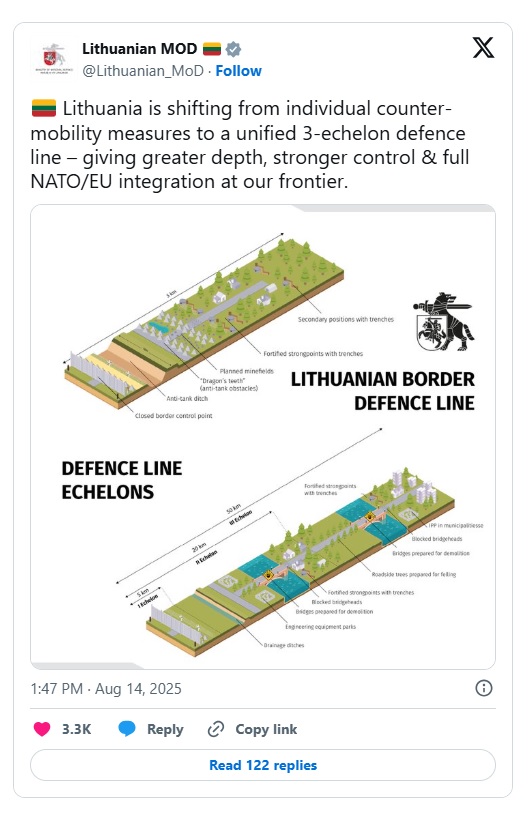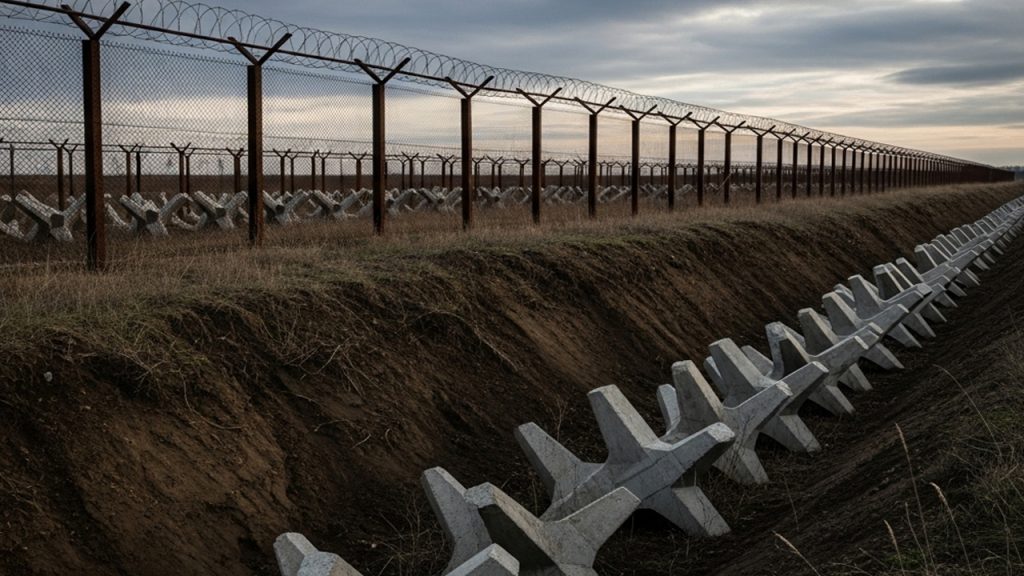NATO ally Lithuania has introduced a new, three-layered defense system to bolster security on NATO eastern flank.
This strategic NATO initiative is designed to enhance deterrence and protect against potential threats by creating a robust and multi-faceted barrier.
The system integrates advanced technologies and coordinated military strategies to strengthen the alliance’s collective defense posture in the region.
Following a series of escalating provocations, Lithuania has initiated a major security project, implementing a new three-layered defense system along its borders with Belarus and Russia’s Kaliningrad exclave.
This strategic move is a direct response to the changed security landscape in the NATO Baltic region since Russia’s 2022 invasion of Ukraine.
The first layer, a “hardened denial zone” extending five kilometers from the border, will feature ditches, obstacles and razor wire.
Minefields and fortified positions equipped with Javelin and Spike-LR2 anti-tank missiles will also feature.

The second layer, a “maneuver disruption zone” located 10 to 15 kilometers behind the border, will use rigged bridges, mined culverts, and engineered chokepoints to slow advancing forces.
This area will also be a staging ground for ambushes and counterattacks by Lithuanian mechanized infantry supported by Boxer infantry fighting vehicles, artillery, and German-made PzH 2000s.
The third layer will be the final disruption zone before key NATO civilian areas, designed for the rapid conversion of civilian infrastructure into defensive positions.
This echelon will feature mobile HIMARS launchers, electronic warfare systems, and Switchblade 600 drones, providing long-range and strike options.
This initiative is part of a broader commitment by Lithuania to enhance its national security and support its allies.
The country has been a strong supporter of Ukraine, providing military aid and training, and has increased its defense spending to over 3.1% of its GDP.

The project comes after recent events, including Russian drone incursions into Lithuanian airspace, which have prompted officials to call for stronger NATO protection.
Russian drone and missile incursions into the airspace of NATO member countries have become a persistent and concerning issue.
Polish authorities believe a Russian drone, possibly a decoy, exploded in eastern Poland just two days ago, prompting a diplomatic protest from Warsaw. The incident follows other recent violations of Polish airspace.
NATO scrambled German fighter jets from a Romanian base after Russian drones struck Ukrainian targets near Romania’s border.
They recently passed a law to allow the military to shoot down drones violating its airspace.
Lithuania has called on NATO to strengthen its air defenses after a Russian military drone violated its airspace.
The entire defense program is expected to cost €1.1 billion over 10 years, with €800 million allocated for fortifications alone. Securing and managing this funding from the national defense budget, loans, and European security programs will be a continuous challenge.








